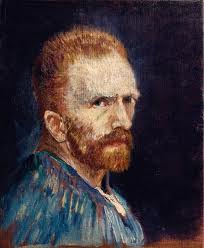More Creative Creativity

I’m a traditionalist. And an iconoclast.
In his classic research on creativity, Mihaly Csikszentmihalyi wrote that creative personalities often display ten contrasting characteristics. In previous articles, we’ve looked at the first six. (Click here and here). Today let’s look at the final four.
In all cultures, men are brought up to be “masculine” and to disregard and repress those aspects of their temperament that the culture regards as “feminine,” whereas women are expected to do the opposite. Creative individuals to a certain extent escape this rigid gender role stereotyping. Csikszentmihalyi refers to this as androgyny — not just in the sexual sense but in the broader, cultural sense: “a person’s ability to be at the same time aggressive and nurturant, sensitive and rigid, dominant and submissive…” In his sample of creative personalities, Csikszentmihalyi found that the men were more sensitive and the women more assertive than their cultural norms would suggest.
Generally, creative people are thought to be rebellious and independent. Yet it is impossible to be creative without having first internalized a domain of culture. To master the vast knowledge of a given discipline, novices need to work very hard. They wouldn’t work so hard unless they believed deep knowledge of the field were important. Thus, in some senses, they are traditionalists as much as they are iconoclasts.
Most creative persons are very passionate about their work, yet they can be extremely objective about it as well. To perform difficult tasks that might take years to complete, one needs to be passionate. Yet to place one’s work against an existing domain’s framework — and to make it credible — one needs to be clear-eyed and objective.
Finally, the openness and sensitivity of creative individuals often exposes them to suffering and pain yet also a great deal of enjoyment. Leading a discipline into a new way of thinking is a lonely job. Being sensitive (as noted above) only complicates the issue. Csikszentmihalyi asks an important question: does suffering lead to creativity or does creativity lead to suffering? Normal people may see divergent thinking and obsessive interest in obscure topics as weird or even deviant. As a result, “the creative person may feel isolated and misunderstood …. Yet when the person is working in the area of his or her expertise, worries and cares fall away, replaced by a sense of bliss. Perhaps the most important quality, the one that is most consistently present in all creative individuals, is the ability to enjoy the process of creation for its own sake.”
So we have ten different contrasting personality types that commonly occur in creative people. In each case, the creative personality appears at two different points on the spectrum. They are both traditionalists and iconoclasts. Smart and naive. Energetic and quiet. Introverts and extroverts. Imaginative and realists. As Csikszentmihalyi points out, “…without the second pole, new ideas will not be recognized. And without the first, they will not be developed to the point of acceptance.”
Click here for Csikszentmihalyi’s book. By the way, his surname is pronounced Six-Cent-Mihaly.
Creatively Creating Creativity

I alternate between fantasy and reality.
I recently wrote that Mihaly Csikszentmihalyi, in his book, Creativity: Flow and The Psychology of Discovery and Invention, identified ten different pairs of opposing traits that occur commonly in creative personalities. We looked at three pairs in that post (click here). Let’s look at three more today.
Creative individuals alternate between imagination and fantasy at one end, and a rooted sense of reality at the other. Csikszentmihalyi notes that Albert Einstein believed that both art and science “are two of the greatest forms of escape from reality that humans have devised.” To create new truths — to change the paradigm in Thomas Kuhn‘s phrase — one needs a great imagination, bordering on fantasy. At the same time, the creative person realizes that the fantasy could actually be true. The imagination extends well beyond reality but, sooner or later, reality catches up. Csikszentmihalyi also notes how artists respond to Rorschach tests. Creative artists tend to respond with more original and more detailed stories than “normal” people. But the artists rareley give “bizarre” answers as normal people sometimes do. Csikszentmihalyi concludes, “Normal people are rarely original, but they are sometimes bizarre. Creative people, it seems, are original without being bizarre. The novelty they see is rooted in reality.” Thus, it seems that it’s good to study reality so you can connect it to your imagination. Imagination disconnected from reality is simply bizarre.
Creative people seem to harbor opposite tendencies on the continuum between extroversion and introversion. Being truly creative requires a lot of time alone. You need solitary time to master your domain, to learn how to play the piano, or to write your magnum opus. Yet many of Csikszentmihalyi’s creative people said it was equally important to interact with other people and just kick ideas around. As Freeman Dyson puts it, “Science is a very gregarious business. It is essentially the difference between having this door open and having it shut.”
Creative individuals are also remarkably humble and proud at the same time. Highly creative people understand that they “stand on the shoulders of giants” — they first mastered their domain and then they extended it. Csikszentmihalyi points out that they also understand the role of luck in their discoveries and that they’re more focused on future work, making past work seem less boast worthy. At the same time, creative individuals realize that they have indeed created new forms and structures that genuinely make them proud. Csikszentmihalyi sees this duality as the contrast between competition and cooperation. To change your field (or to change the world), you need to be aggressive. “Yet at the same time, [creative individuals] are often willing to subordinate their own personal comfort and advancement to the success of whatever project they are working on.”
Click here for Csikszentmihalyi’s book. By the way, his surname is pronounced Six-Cent-Mihaly.